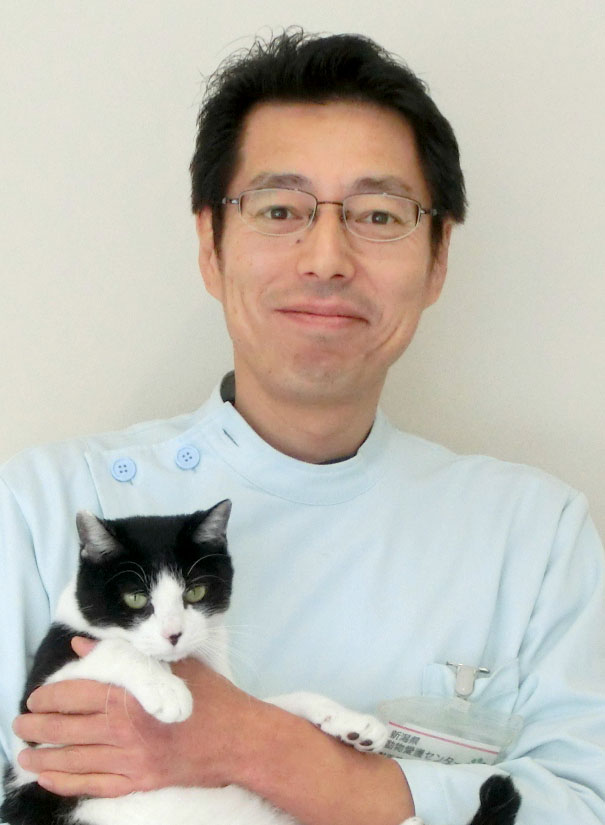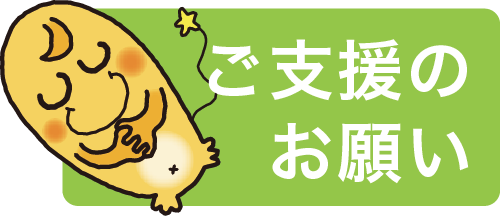[include-page id=”27802″]
Symposium 1 «Abstract»
“Emergency evacuation with animals
—Sample Plans for Evacuation and Sheltering”
Date: Sun. 19th July 14:30~17:30
Venue: Convention Hall
Organiser: Executive Committee
Purpose: Recently it was proposed by the Japanese government (Ministry of the Environment) that we should be the emergency evacuation with household pet on the occasion of an urgent disaster. Not only the evacuation provides both relief of human beings and the animal, but also it makes difficult for an owner to evacuate and the public health problems by a left animal when we cannot evacuate with the animal. In this symposium, we consider concrete measures in regard to emergency evacuation with past case studies.
<Chairperson’s Message>
 Kazumi SASAI (Osaka Prefecture University, School of Veterinary Science, Director for Academic Affairs, Professor/Osaka University, Graduate school of Engineering Invited Professor/Auditor secretary, Osaka Veterinary Medical Association/D.V.M., Ph.D.)
Kazumi SASAI (Osaka Prefecture University, School of Veterinary Science, Director for Academic Affairs, Professor/Osaka University, Graduate school of Engineering Invited Professor/Auditor secretary, Osaka Veterinary Medical Association/D.V.M., Ph.D.)
In Japan, natural disaster such as Earthquake, tsunami and typhoon etc. occurs frequently, to keep safety and security, it is essential for “Self-help” based on the awakening of every people and companies to cooperate with “Mutual assistance” by local a variety of main constituents and “Public help” of the national government and the local government. However, we will gradually strengthen measures against a major disaster in the past, it is hard to say that we make our country well prepared for next natural disaster.
National government revised Disaster Countermeasure Basic Act and it was important that we always strengthened an action to disaster prevention. Furthermore, Ministry of the Environment announced the first guidelines “Countermeasure guidelines of pets in times of disaster” incorporating in the emergency evacuation with household pet at ahead of National Disaster Prevention Day, September, 2013.
By hearing the lectures who were responsible for administration of a central role of the correspondence about animals and concerned with development of various related law revisions and guidelines, it is thought that animated discussion is wanted as a keyword “The emergency evacuation with household pet”
“Countermeasure guidelines of pets in times of disaster”
https://www.env.go.jp/nature/dobutsu/aigo/2_data/pamph/h2506/ippan.pdf
“Future Effort in Consideration of the Situation of the Great Hanshin-Awaji Earthquake”
 Mikio SUGIHARA (Chief of Hyogo Prefecture Animal Welfare Center, Awaji Office)
Mikio SUGIHARA (Chief of Hyogo Prefecture Animal Welfare Center, Awaji Office)
At 5:46 am on January 17, 1995, a magnitude 7.3 earthquake suddenly hit the south of Hyogo prefecture. That produced an enormous damage, including 6,434 deaths, three missing people, 43,792 injured people, 639,686 damaged houses, and 7,574 fire damaged buildings. The amount of loss was 9 trillion 926 billion yen (about 10% of the national budget).
In the process, on January 21, four days after the earthquake, Hyogo Veterinary Medical Association and Veterinary Association of Kobe City, and Japan Animal Welfare Society in time set up “Hyogo Prefecture South Earthquake Animal Rescue Headquarters” (hereinafter called “Rescue Headquarters”). Hyogo prefecture and Kobe city supported the Rescue Headquarters. The Rescue Headquarters set up two shelters in Kobe city and Mita city, and then they conducted activities; 1) distribution of food to shelters, 2) protection and institutionalization of roaming animals and information services, 3) medical treatment for injured animals, 4) keeping surrendered animals, temporary keeping of special needs animals, 5) finding new owners (adoption), 6) consultation about animals. All that time, they kept 1,556 animals. After that, animals were returned to owners or adopted to new owners. The Rescue Headquarters was closed down on May 29, 1996, a year and four months after the earthquake.
A total of 21,769 volunteers supported the Rescue Headquarters and a donation of 266 million yen was received. This action was the first animal rescue activity conducted systematically with government and people. At the situation of earthquake, many people brought their pets to the shelters. In a long period of evacuation life, there were challenges of sounds and smell of animals, and the future life with animals.
“The Guidelines for the pet animals at Times of Disaster”
 Katsuya TERAI (Environmental Health and Food Hygiene Division Shizuoka Prefectural Government)
Katsuya TERAI (Environmental Health and Food Hygiene Division Shizuoka Prefectural Government)
At the Great East Japan Earthquake, some autonomous communities had a hard time with handling animals, because there was no agreement about pets in shelters and the situation in which owners evacuated without pets.
For this reason, the Act on Welfare and Management of Animals was changed and autonomous communities were required to lay out the framework of disaster action guidelines to control animals properly.
For which, the numbers of pets evacuating with people are expected approximately twelve thousand at most in Shizuoka Prefecture. However, there are not many cities and towns that accept evacuation with pets. Therefore, some rules about pets are required in case of disaster.
June 2014, in the Shizuoka Prefecture Regional Disaster Prevention Plan, we added new clause about owner liability based evacuation with pets, and we clarified the rules about pets.
In the guideline, we established the functions of pet owners, governments, veterinary medical associations, and volunteers, as well as their regular preparation and rearing management at the time of pet evacuation.
In the future, we will spread the guideline to pet owners and relevant people, and we will continue our efforts to support pet evacuation and rearing management of pets. We will especially encourage the pet owners to attach name cards on pets, to stockpile food and water for pets, to manage pet’s healthcare, and to spread an awareness of pet training. To the cities and towns, we will encourage to clarify if they will accept evacuation with pets or not. In addition, we would like to implement the volunteer training and the rearing management support at shelters to prevent troubles.
“Appropriate relation with a pet in catastrophic disaster”
 Kazuyoshi OHNISHI (Dr. of Engineering, Associate Professor; Architecture and Urban Safety Planning Laboratory, Graduate School of Engineering, Department of Architecture, Kobe University)
Kazuyoshi OHNISHI (Dr. of Engineering, Associate Professor; Architecture and Urban Safety Planning Laboratory, Graduate School of Engineering, Department of Architecture, Kobe University)
There is a basis of disaster prevention in integration of daily life and emergency.
The basic policy of disaster prevention is integration of daily life and an emergency. Much of trouble on evacuation with a pet in disaster seem to be related in (1) breeder discipline, (2) pet training, (3) a true appreciation of community people (4) shelter operation. It is important to establish good relation making between person and animal.
From the viewpoint “regulation on regional evacuation support by community for people with special needs in emergency in Kobe city” (operated in 2013) that I have concerned from its decision stage, I propose we should treat a accompaniment evacuation with a pet as equal to “people with special needs in emergency” , that is, aged or disabled people at a time of big disaster.
It’s necessary to define the state of the area evacuation at the time of disaster or an urgent accident by a structure of mitigation how to reduce damage of a local community in this case. Breeder’s injury and confinement caused by earthquake shaking or an accident are also fatal for a pet.
Firstly, where on a usual relation with a pet a problem lies should be found. Secondly, an action plan for the solution should be shared by breeder, community and local government. Finally, a constant match is continued along the timetable established by the person concerned and achievement evaluation is put into effect by the community level.
The thing which should be done is shown as follows
1. An early evacuation: It takes time and labor to evacuate together with “a pet with special needs in emergency”. When people with pet faced in evacuation requirement you should refuge on your own initiative.
2. Relation making with a neighborhood: Who can help a pet when being absent, help on the refuge route
3. Image training: Sharing is guessed as abstraction of a problem by making reference to a shelter experience of an emergency drill. An acceptance at a shelter and resident’s understanding for symbiosis are deepened.
“Response to Animals Evacuated with their Owners During the Chuetsu Earthquake —Allowing Animals into Evacuation Areas and Temporary Housing”
 Jun TOOYAMA (Niigata Prefecture Animal Rights Protection Center, Assistant Counsellor)
Jun TOOYAMA (Niigata Prefecture Animal Rights Protection Center, Assistant Counsellor)
The Chuetsu Earthquake struck in October of 2004 and left 68 people dead, 4,795 people injured, and some 120,000 homes damaged.
This disaster resulted in nearly 100,000 people being evacuated into 500 locations at its peak. At that time it was not common for pets to be evacuated with people, so there was no system in place to deal with the animals. Despite this, amidst the aftershocks, many animals continued to be brought into the shelters. Whether or not to allow the animals in was left up to those in charge at each evacuation center, and there were many instances where evacuees were instructed to leave pets outside. People ended up leaving their pets in the bicycle parking areas or under the eaves of the building.
The prefecture began offering support such as opening a consultation desk for animal issues at the Municipal Headquarters for Disaster Control and distributing pet supplies. However it seemed that in many cases evacuees were not told of these services, and it was very difficult to figure out how many animals were actually at the evacuation centers.
Niigata Prefecture’s basic idea was that as pets are members of the family, taking care of these animals would be key in ensuring the mental wellbeing and vitality of evacuees. The Prefecture carried out many plans to ensure that people would be able to live with their pets as soon as possible and to that end worked to allow people live with their pets even if they requested temporary housing.
Along with making a request to the Municipal Headquarters for Disaster Control that pets be allowed into temporary housing, Niigata Prefecture also announced it would set rules for pets in temporary housing and ensure support from evacuation centers, veterinarians, and staff from animal welfare associations to ensure everyone followed the rules and that no trouble occurred.
For future disasters, under the assumption that evacuees will be bringing their pets with them, we should be working on ensuring that evacuation areas and temporary housing will allow people and their pets to live together.
We should also include pets in evacuation training to ensure that residents and other parties think of it as natural. It is also necessary to further initiatives such as including a column for pets in the list of people using the evacuation center.
“Necessity and preparing for evacuation with pets in case of emergency”
 Chizuko YAMAGUCHI (Japan Animal Welfare Society, Special Adviser)
Chizuko YAMAGUCHI (Japan Animal Welfare Society, Special Adviser)
Even after the East Japan Great Earthquake, the disaster of volcano eruption, land slide, etc. occurred in various area and the residents in that area have to evacuate. The Ministry of Environment lay down a principle of “Evacuation with pets in emergency”, but every time dealing with suffered pets still in question.
Now many people think the pets are the member of family in Japan, so many owners never think of evacuating without their pets.
People and animals are both under distress and anxiety in the disaster, so staying together with pets softens such pain of both sides. If the people are refused the evacuation with pets, they may refuse the evacuation itself. On the other hand, if animals are left in the dangerous and no admittance area, it is difficult to rescue them and animals’ lives are at risk. And the wild pets roaming around the residential area sometimes frighten the people.
To promote and prepare the “Evacuation with pets in emergency”, owners of the pets have to have physical and mental health care of their pets in ordinary times and need to control of their behavior to prevent troubles and accidents at the refuge because many people and pets gather together in one place. And the local government should make the own guidelines under the national guidelines and make it well-known in citizens and practice the movement and cooperation.

